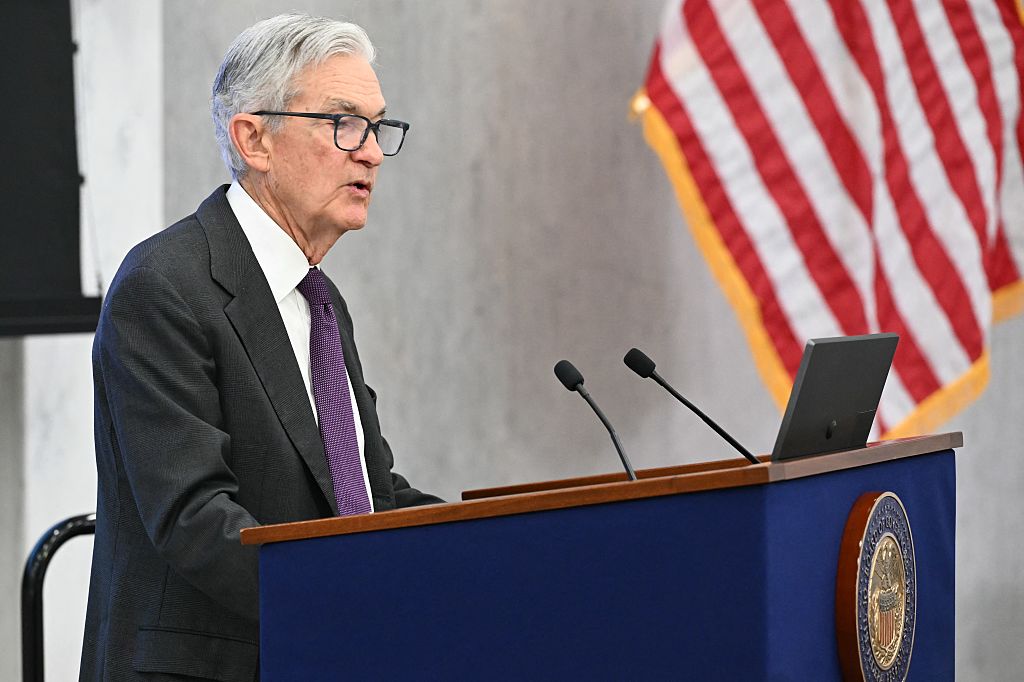Refresh
Trump heads to the Fed building
President Trump is taking a site tour of the Federal Reserve building in Washington, D.C., this afternoon amid criticism of the central bank’s handling of its renovation of the facilities. Specifically, the cost of the improvements is now at $2.5 billion, which is notably higher than the initial $1.9 billion price tag.
As UBS economist Abigail Watt explains, “The renovations first came up in the Chair’s semiannual testimony to Congress in June with [Republican] Senator [Tim] Scott of South Carolina calling the renovations ‘luxury upgrades that feel more like they belong in the Palace of Versailles.'”
The White House quickly joined the condemnation of the cost of these improvements and used this as example of how Powell is mishandling his duties. Indeed, when asked by a reporter earlier this month if the increased cost is a fireable offense, President Trump said, “I think it sort of is.”
The Supreme Court indicated earlier this year that members of the Federal Reserve’s board of governors or the Federal Open Market Committee could only be removed “for cause.”
Powell has denied any wrongdoing and in a letter to Russell Vought, director of the Office of Management and Budget, noted that the Fed has “taken great care to ensure the project is carefully overseen since it was first approved by the Board in 2017.”
– Karee Venema
The Federal Reserve is not likely to cut short-term rates until closer to the end of 2025
Federal Reserve Chair Jerome Powell has emphasized that the Fed won’t cut interest rates until it has a better understanding of how higher tariffs affect longer-term inflation expectations.
And because price effects from tariffs take time to work through the supply chain to the consumer, it’s not likely that it will be soon.
Tariffs have only had a small impact on inflation so far. But Powell has noted that professional forecasters believe tariffs will raise inflation this year, at least temporarily.
There’s a danger that these price increases could affect longer-term inflation expectations. As a result, Powell feels that it is necessary to maintain a moderately restrictive monetary policy, as the Fed has been doing.
Complicating matters for Powell is that cutting rates now could create market perceptions that the Fed is being unduly influenced by the White House.
The Fed’s next policy decision will be released the afternoon of Wednesday, July 30.
– David Payne

David Payne
David is both staff economist and reporter for The Kiplinger Letter, overseeing Kiplinger forecasts for the U.S. and world economies. Previously, he was senior principal economist in the Center for Forecasting and Modeling at IHS/Global Insight, and an economist in the Chief Economist’s Office of the U.S. Department of Commerce.
Fed meeting schedule for 2025
The next Fed meeting, which runs from July 29 to July 30, marks the fifth gathering of 2025. That means there are three more to go.
“The committee meets eight times a year, or about once every six weeks,” writes Kiplinger contributor Dan Burrows in his feature, “When Is the Next Fed Meeting?“.
The Federal Open Market Committee “is required to meet at least four times a year and may convene additional meetings if necessary,” Burrows adds, noting that “the convention of meeting eight times per year dates back to the market stresses of 1981.”
Fed meetings last two days and wrap up with the release of a policy decision at 2 pm Eastern Standard Time. This is typically followed by the Fed chair’s press conference at 2:30 pm.
Here is the full Fed meeting schedule for 2025:
- January 28 to 29
- March 18 to 19
- May 6 to 7
- June 17 to 18
- July 29 to 30
- September 16 to 17
- October 28 to 29
- December 9 to 10
– Karee Venema
President Trump’s tariff policies are beginning to have a slight impact on inflation
Inflation picked up in June, according to the Bureau of Labor Statistics. The Consumer Price Index (CPI) was up 0.3% month over month in June, faster than May’s 0.1% increase. The CPI was 2.7% higher year over year, an uptick from the 2.4% rise seen the month prior.
Core CPI, which excludes volatile food and energy prices and is seen as a better measure of underlying inflation trends, was up 0.2% month over month and 2.9% year over year, exceeding May’s readings.
The June CPI report “confirms what many have been warning: tariffs are potentially moderately inflationary, and they’re beginning to show up in consumer prices,” says Matt Mena, crypto research strategist at 21Shares.
But Mena says we’ll need to see more data points to confirm this trend.
As for future rate cuts, the strategist notes that the central bank has been preparing for a pivot, but the CPI report “complicates the picture,” and the hotter headline figure “could give the Fed pause on cutting rates too soon.”
As of June 24, CME Group’s FedWatch shows that futures traders are pricing in a quarter-point rate cut in September and another in December.
– Karee Venema

Karee Venema
With over a decade of experience writing about the stock market, Karee Venema is the senior investing editor at Kiplinger.com. She joined the publication in April 2021, and oversees a wide range of investing coverage, including content focused on equities, fixed income, mutual funds, ETFs, macroeconomics and more.


